Military potential of the Hamas movement
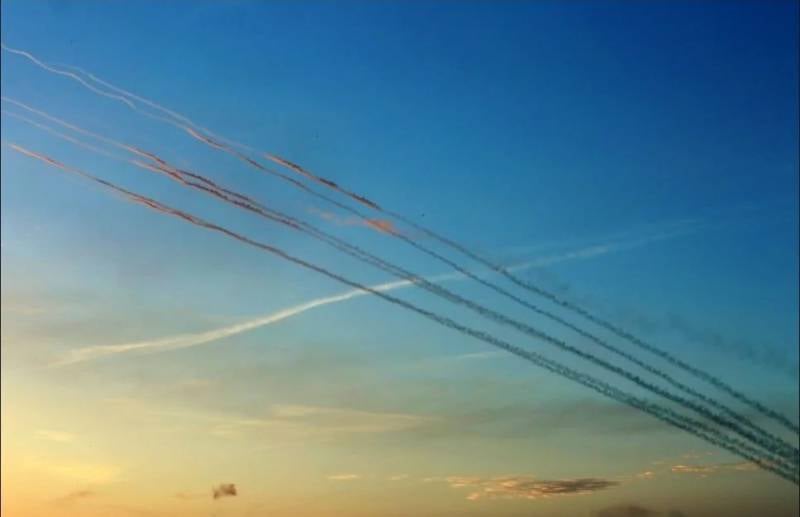
Hamas rocket attack on Israel. Photo Telegram / "Sith Corner"
On October 7, the Palestinian Hamas movement carried out its largest attack on Israel in recent years. Several thousand rockets were fired from the Gaza Strip, and mobile strike groups carried out a ground breakthrough. These events show that the movement has a fairly large and serious military potential. At the same time, the construction of the combat wing was carried out under conditions of severe restrictions and constant threats from the enemy.
Organizational matters
The movement (later the political party) Hamas (“Harakat al-Muqawama al-Islamiya” - “Islamic Resistance Movement”) was founded at the end of 1987. It declared its goal to be the destruction of Israel and the creation of an Arab state in all territories of the former Mandatory Palestine. Unlike other Palestinian organizations and movements, Hamas takes a radical position regarding methods of political and military struggle.
Initially, Hamas lacked any discernible division into militant, political and/or ideological wings. A pronounced military organization within the movement appeared only in the early nineties. It is called the Izz ad-Din al-Qassam Brigade. Since that time, it is these brigades that have been organizing various attacks, actions and terrorist attacks against Israel.
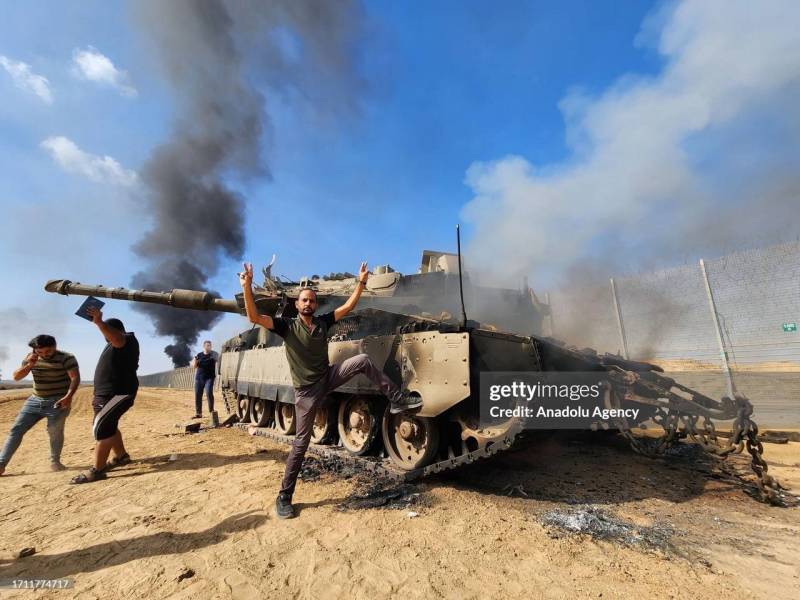
Hamas militants and activists and a captured Israeli tank. Photo by Anadolu Agency
Partially recognized State of Palestine, incl. the Gaza Strip does not have a developed economy, industry, etc. In addition, since 2007 there has been an economic blockade by Israel. As a result, the population of the Palestinian territories and various organizations have to rely heavily on assistance and supplies from abroad.
It is known that friendly foreign states supply the Hamas movement and the Izz al-Din al-Qassam brigades not only with humanitarian aid, various resources, etc., but also with weapons and ammunition. Some of these products arrive in finished form, while other products are shipped in parts. In addition, channels have been established for the transfer of raw materials and supplies for the Palestinians' own handicraft production.
Despite all the restrictions and difficulties, Hamas's military wing maintains a fairly high number of units and is also working to improve their equipment. As the events of recent days have shown, he managed to accumulate serious military potential and successfully attack Israel. At the same time, the nature and consequences of these battles seriously damaged the reputation of the Israeli army and intelligence services.
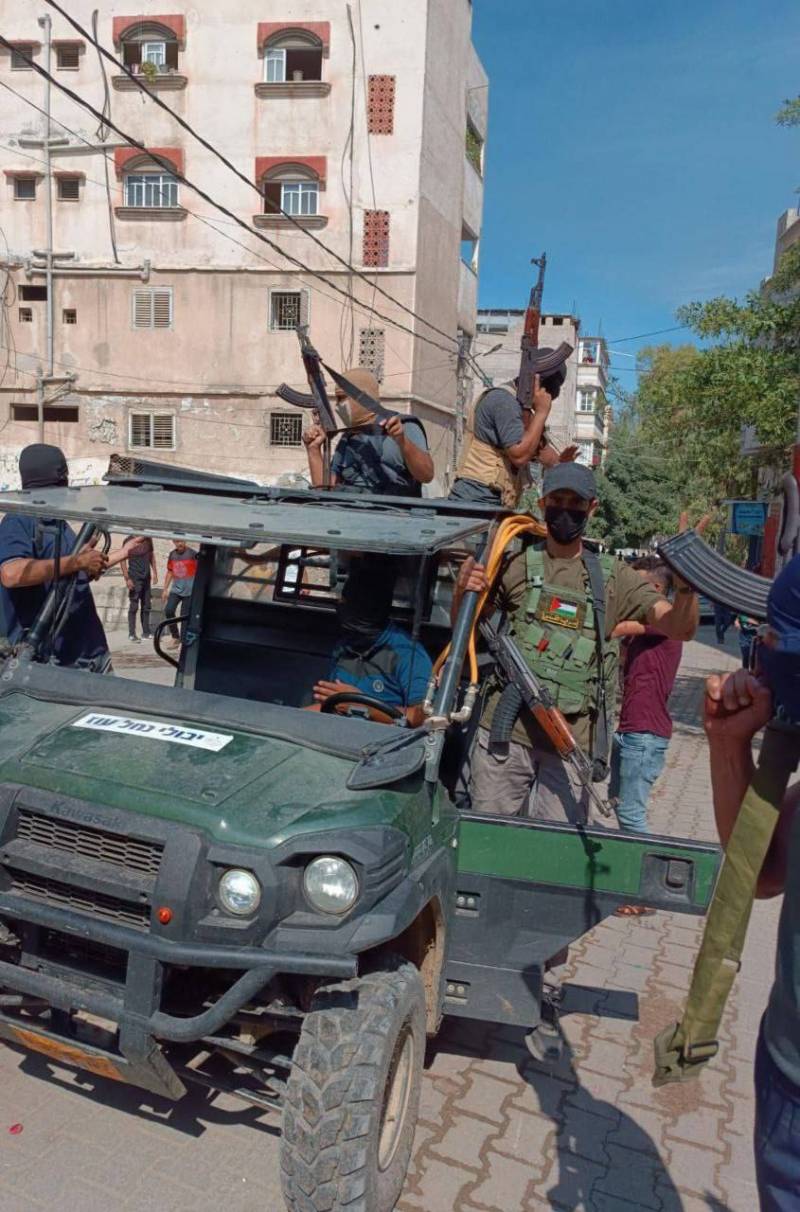
Palestinians and a captured buggy that joined their fleet. Photo: Bmpd.livejournal.com
Combat brigades
For obvious reasons, the militant wing of Hamas maintains secrecy and is in no hurry to disclose information about itself. However, some data is breaking through beyond the organization and Palestine. In addition, information about the Izz ad-Din al-Qassam brigades, etc. provided by foreign intelligence services. Various assumptions are also made based on available information. All this allows us to get a rough picture.
According to The Military Balance directory, Hamas combat brigades consist of about 15-20 thousand people. Other studies and estimates provide other numbers, up to 30-40 thousand people. Which estimate is closer to the truth is unclear. It is assumed that in addition to active members, the Izz ad-Din al-Qassam brigades have a reserve. It can number tens of thousands of people. At the same time, attracting recruits is often not associated with any particular difficulties - the flow of volunteers is ensured by the difficult conditions in Palestine, ideological attitudes, etc.
Foreign intelligence indicates that the organizational structure of the Izz ad-Din al-Qassam brigades does not rise above the company-battalion level. In total, there are up to 27-30 battalions and about a hundred companies. It is also reported that there are separate support units - engineering, logistics, etc.

The breakthrough through Israeli defenses was ensured by engineering units. Photo: The Telegraph
Until recently, it was believed that Hamas combat brigades were essentially ground forces, and with limited capabilities. In the course of recent events, it became known about the formation and deployment of units of a different kind, although they should also be located in the general unit of the “army”. It turned out that the Izz ad-Din al-Qassam brigades have their own airmobile units. A kind of Marine Corps also appeared. Palestine has never had a full-fledged air force, but now some of its tasks are taken over by unmanned aircraft aviation.
Material part
Despite all the progress, the bulk of Hamas's combat wing is infantry. First of all, she is armed with small arms weapons different types. The most common are Soviet-style systems, but there are also other products, including miraculously preserved ones historical and exotic. Hand-held anti-tank grenade launchers are also widely used, and, according to Middle Eastern tradition, they are used as a multi-purpose weapon.
There are a number of types of anti-tank missile systems in service. These are mainly Iranian products or products from other countries that ended up in Palestine in one way or another. In addition, military air defense has been organized. It is based on affordable MANPADS, mostly of the Soviet type. It also became known about the Mutabar-1 complex with unguided anti-aircraft missiles.

The landing force on paragliders and paragliders is preparing to take off. Orient Photos
Due to the active opposition of the main enemy and due to the lack of resources and capabilities for operation, the Izz ad-Din al-Qassam brigades do not have any armored vehicles. Captured vehicles are not put into service, but are usually destroyed on the spot or shown to the Palestinian population in order to raise morale.
Due to the lack of armored personnel carriers or infantry fighting vehicles, transportation and fire support for infantry is carried out by commercial vehicles. In local workshops, “shahidmobiles” with machine gun armament are assembled. Other fire weapons can also be used on the same base. Motorcycles are used as light transport.
The breakthrough in cars and motorcycles was ensured by the engineering units of the brigades. They breached the fences on the Israel-Gaza border, using readily available construction equipment without any explicit training to complete the task.
The recent attack used a completely new means of increasing mobility. Palestinian militants reached some Israeli targets using paragliders and paragliders. Commercial one- and two-seat aircraft were used. Their characteristics turned out to be sufficient to break through Israeli air defense. Amphibious landings of limited numbers were organized. Motor boats were used as landing craft.
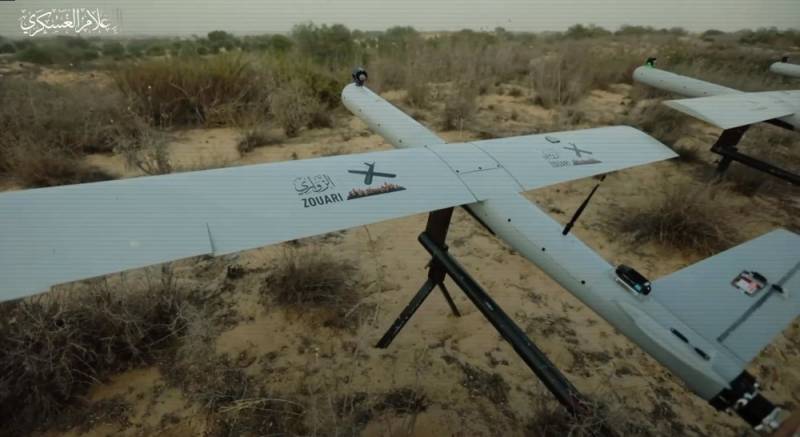
Loitering ammunition Zouari at the starting position. Photo: Imp-navigator.livejournal.com
For reconnaissance and air attacks, Hamas's military wing used small unmanned aerial vehicles, likely also from the commercial market or manufactured independently from available components. Videos of ammunition being dropped on an Israeli tank and a border post were widely circulated. In both cases, the UAVs approached the target without hindrance, fired their weapons, and left.
Full loitering munitions have also been used and continue to be used. Aircraft-type UAVs with a warhead are believed to have been created and produced with the participation of foreign enterprises.
The main striking force of the Izz al-Din al-Qassam brigades, which has been causing significant damage to Israel for many years, is rocket artillery. There is a wide range of various unguided missiles in service. First of all, the products of the “Kassam” series are known. These are shells made at home, literally from scrap materials. Palestinian underground workshops produce several types of such missiles in different calibers with different characteristics.
It is interesting that over time the quality of production gradually increases. At the same time, the characteristics of the resulting missiles are improved. In addition, launchers are being developed. In the past, these were the simplest portable structures made of rolled metal. The recent attack used full-fledged factory-style repeater launchers. At the same time, the Palestinians were able to deliver a large number of such products to the positions.
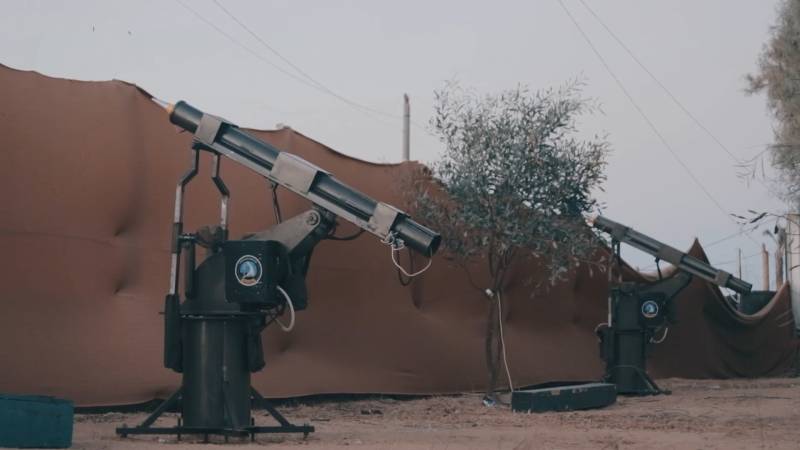
Launchers of the Mutabar-1 air defense system. Photo by Hamas
In difficult conditions
Thus, even in conditions of isolation, economic problems, lack of real industry, etc., the Hamas movement/party was able to create and arm a fairly large militant organization. During its formation and equipment, the movement faced a number of well-known problems and limitations. As a result, it was possible to create only some semblance of light infantry without the support of armored vehicles, artillery, etc.
Despite all the problems and shortcomings, such armed formations turned out to be ready for a direct clash with the Israel Defense Forces. Moreover, they prepared a number of unpleasant surprises for the enemy. As a result of this, Hamas's combat wing was able to overcome the resistance of the border units of the IDF and break through to a significant depth of defense. Moreover, the attack was accompanied by atrocities typical of local battles.
The situation continues to evolve. Israel is making every effort to eliminate the threat and is preparing a ground operation. Hamas responds with threats against hostages and plans to defend itself. What will happen next is unknown. But it is now clear that Palestinian organizations have been able to make the most of available opportunities and foreign assistance to achieve their military and political objectives.
Information